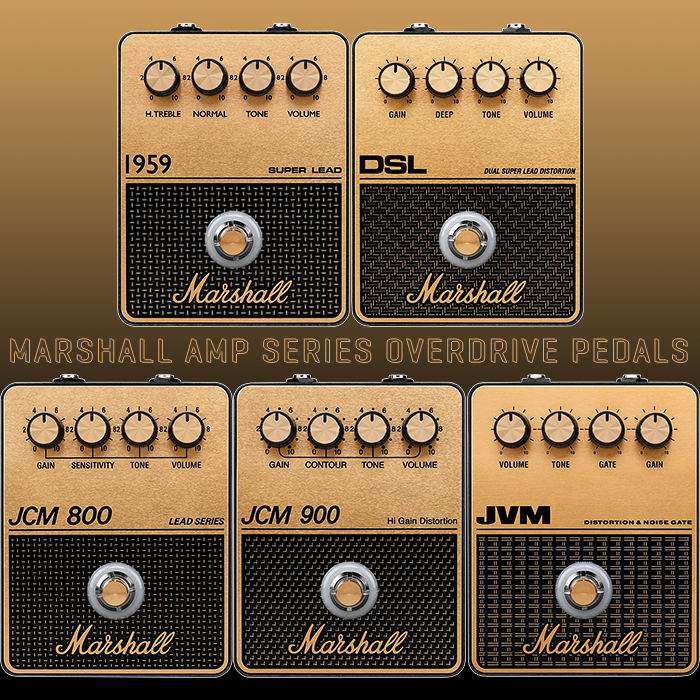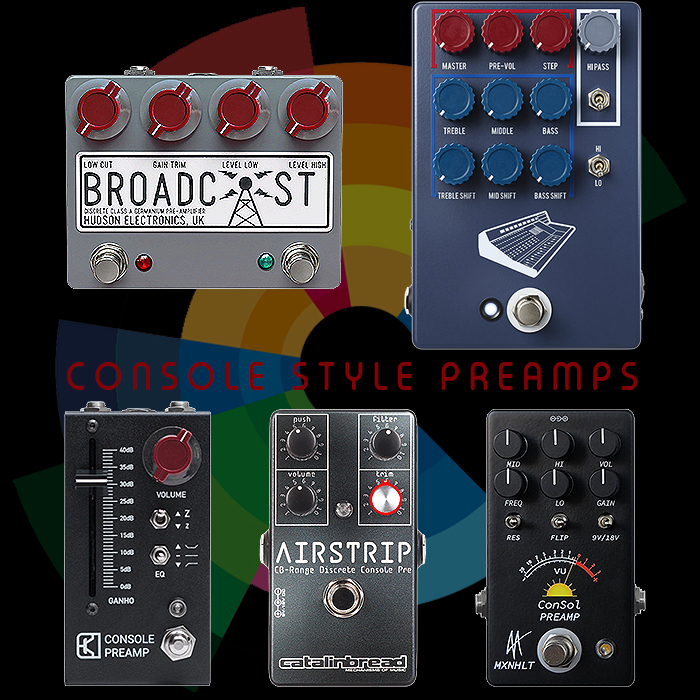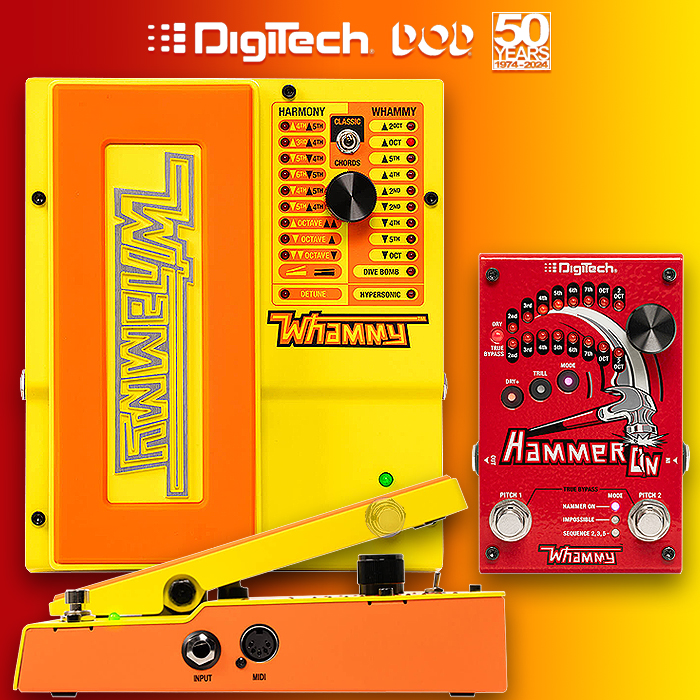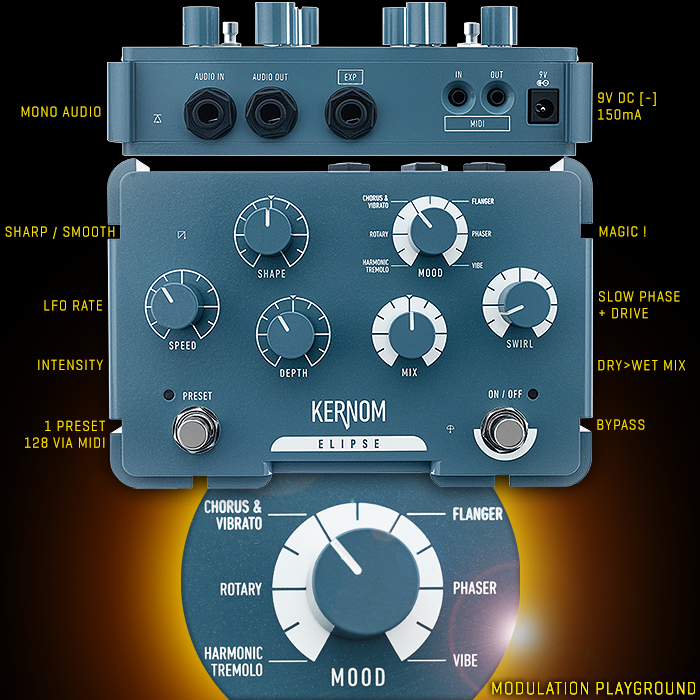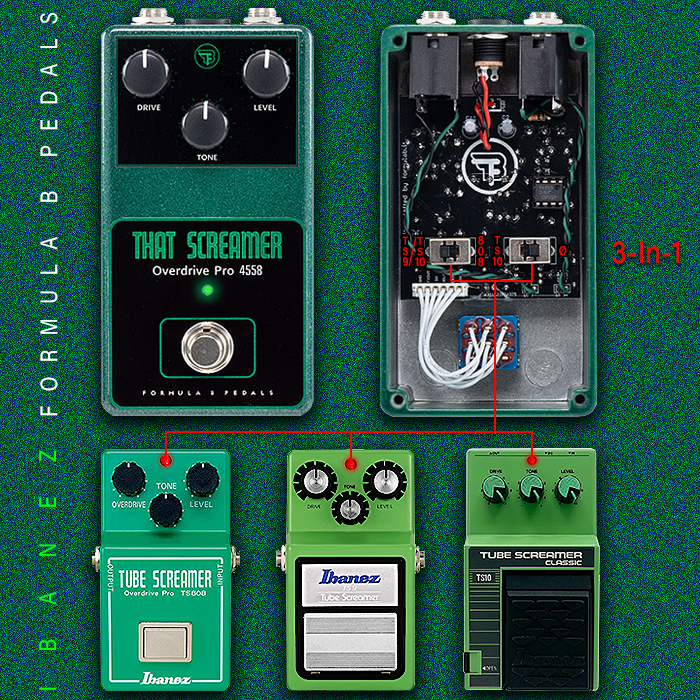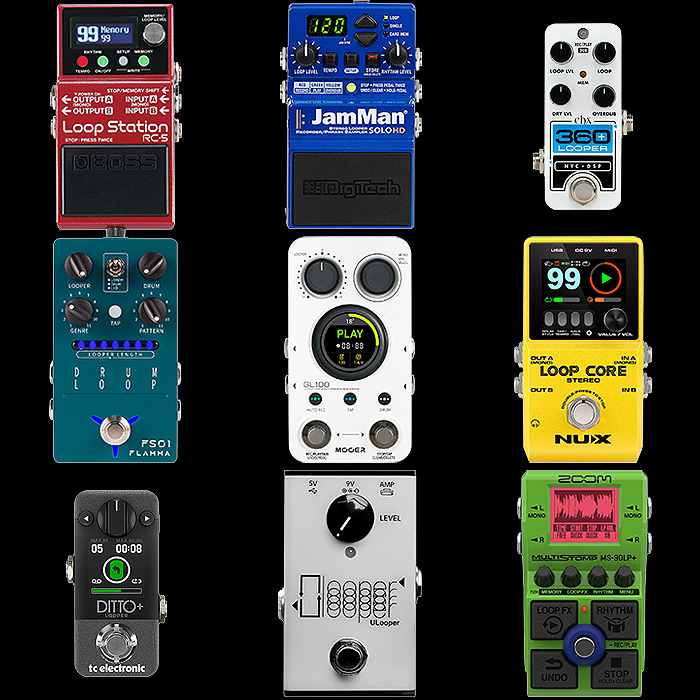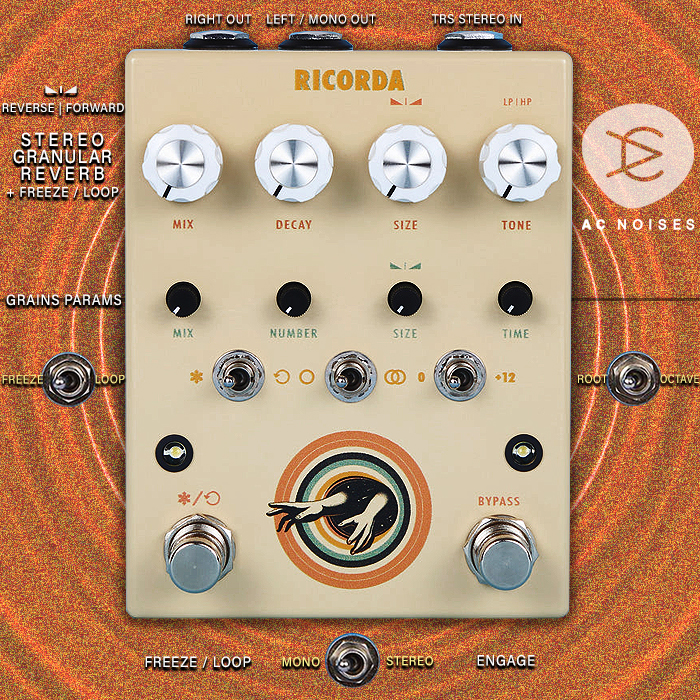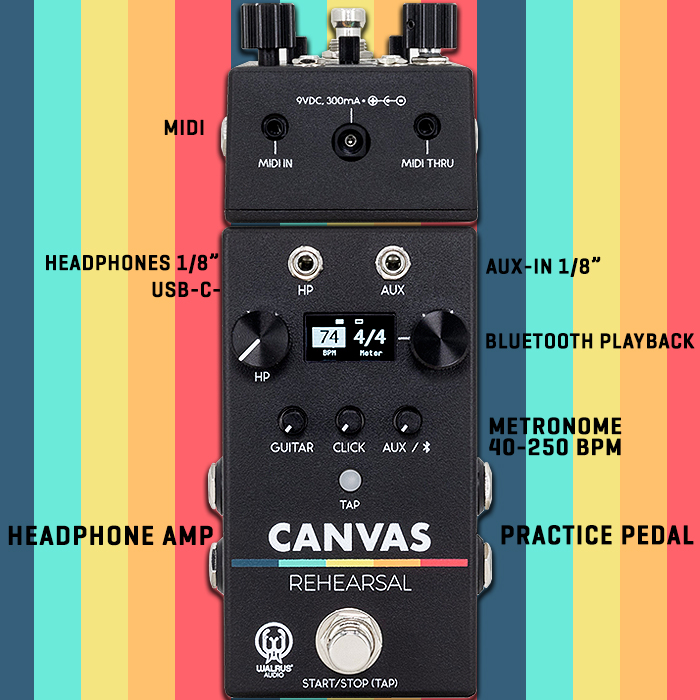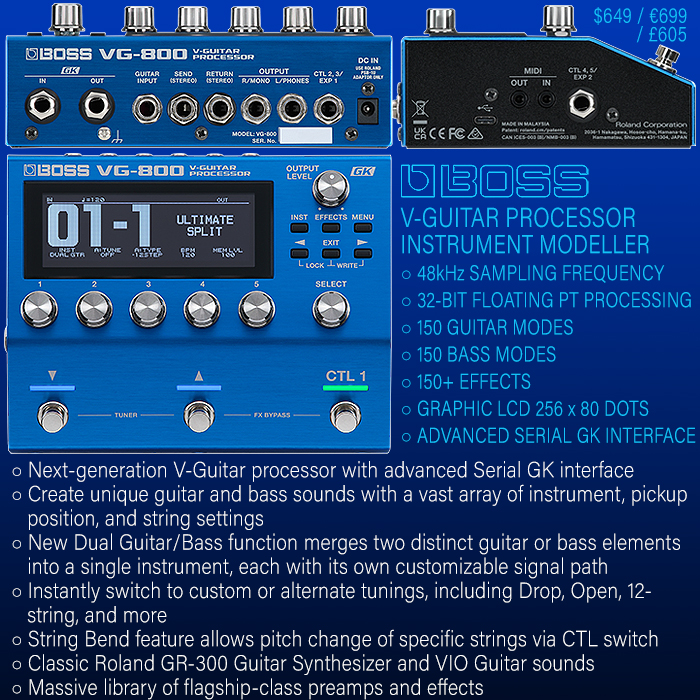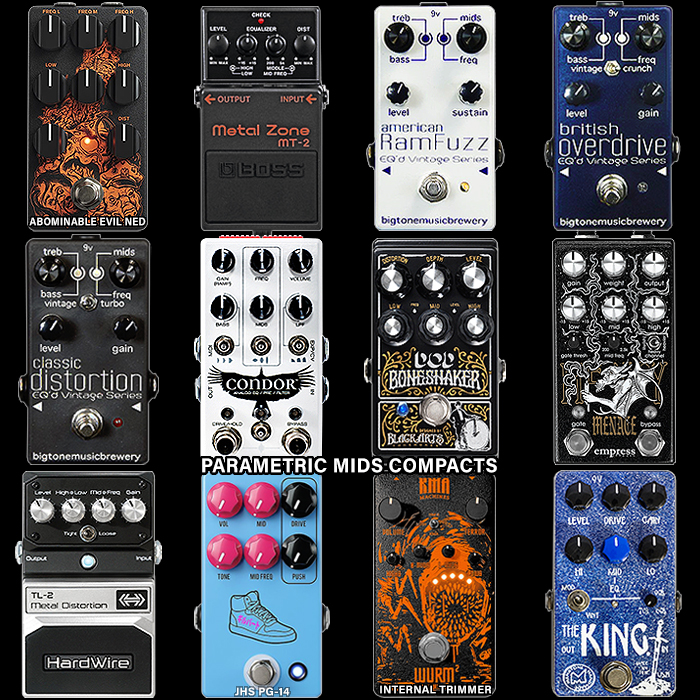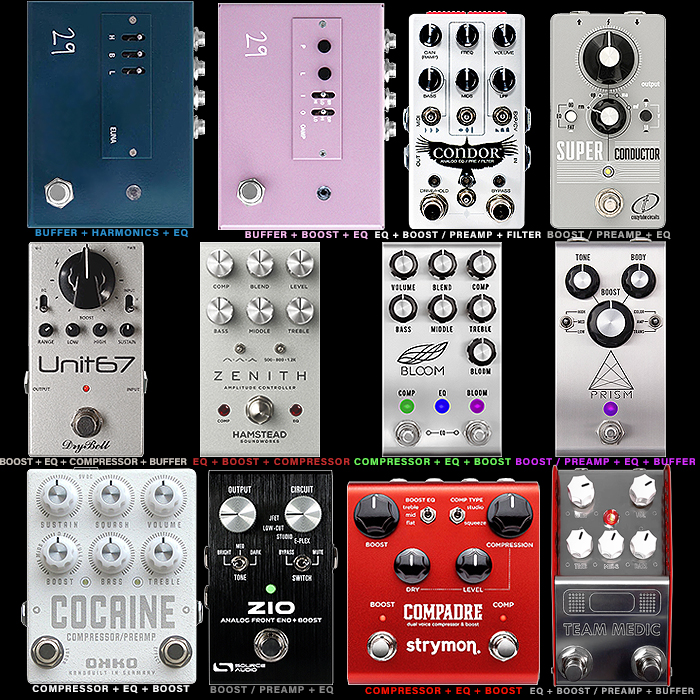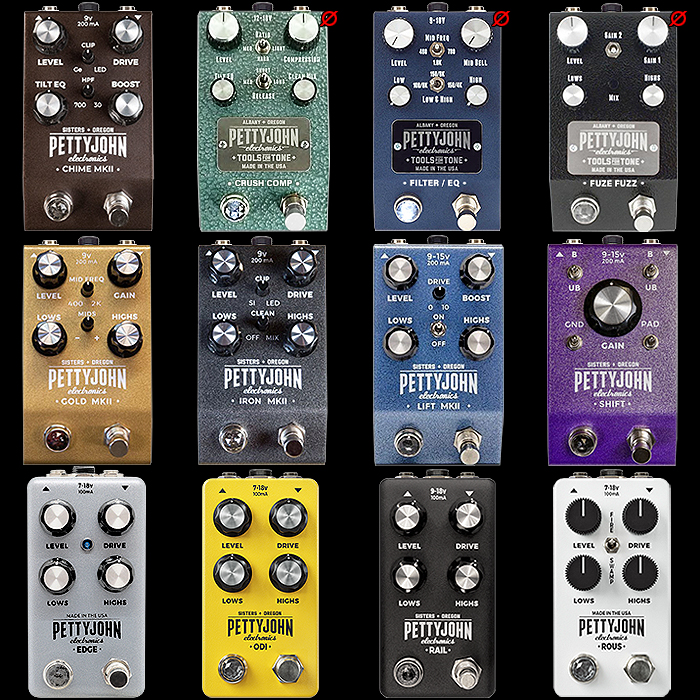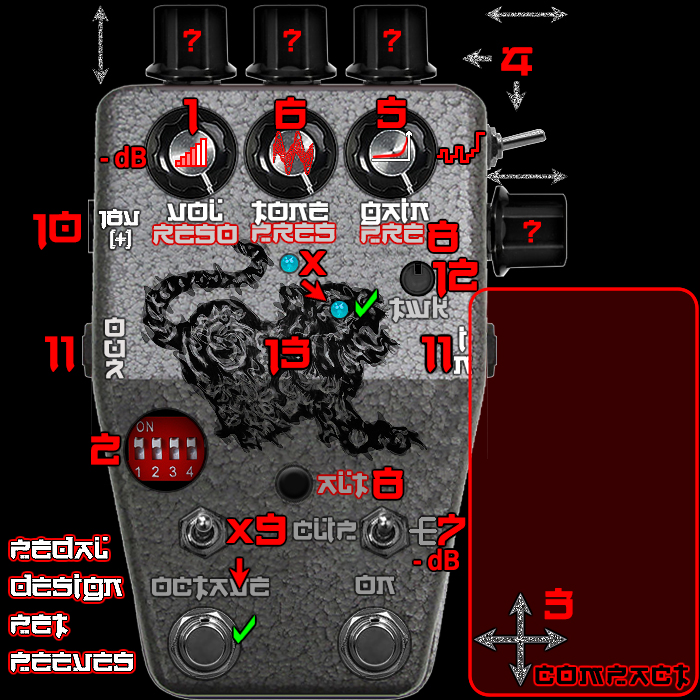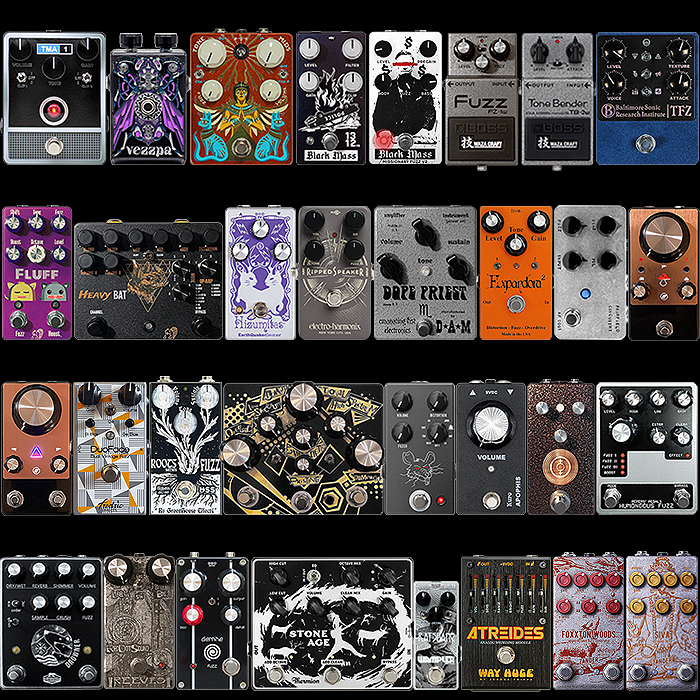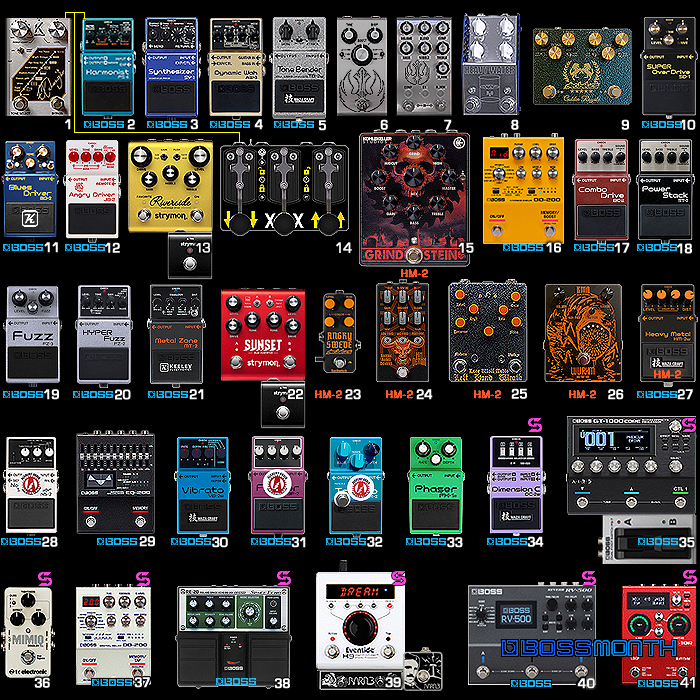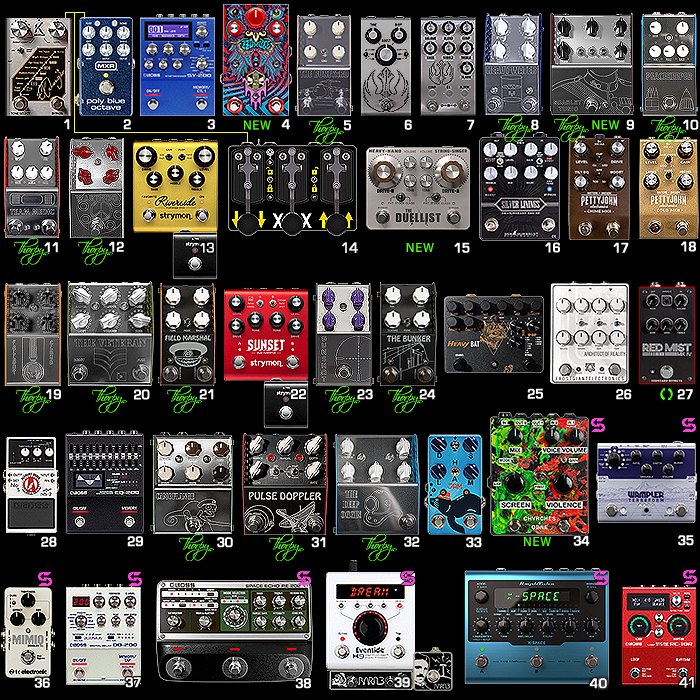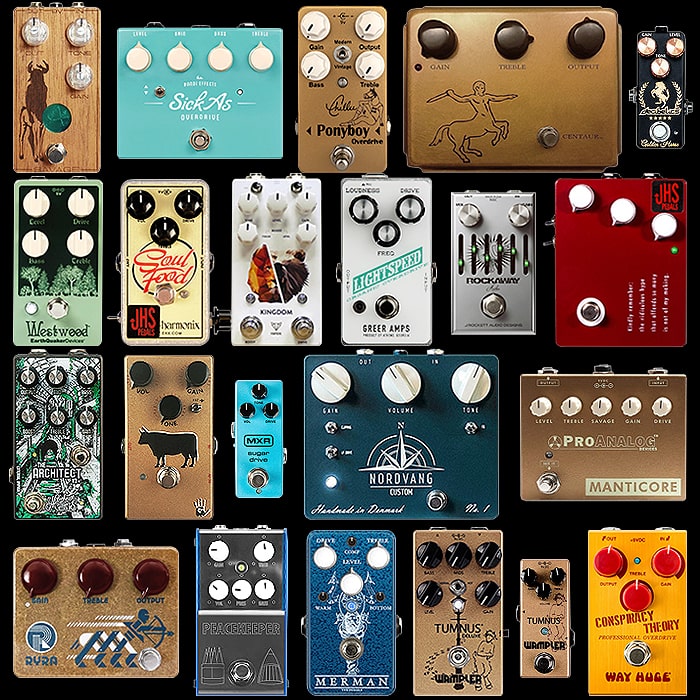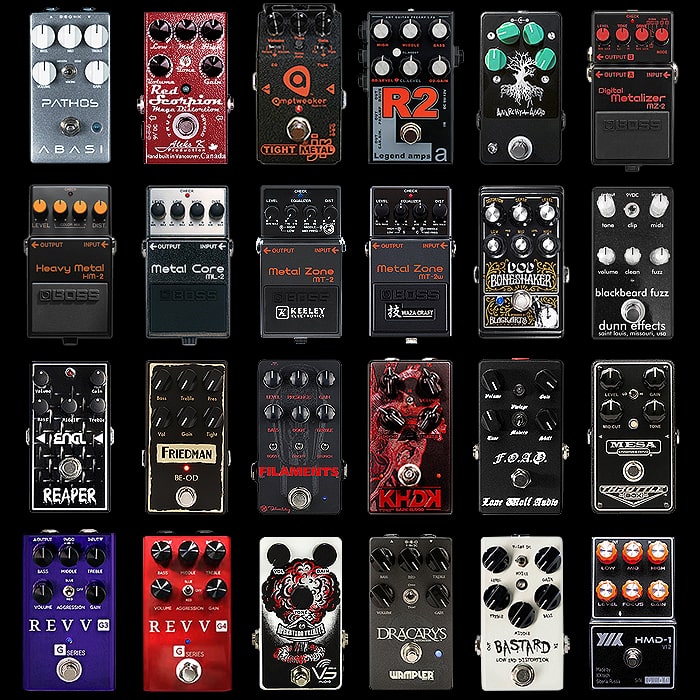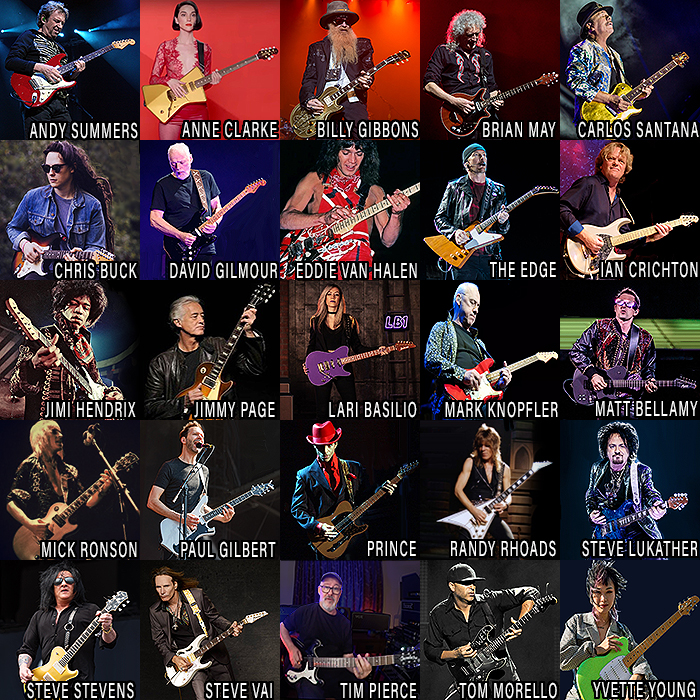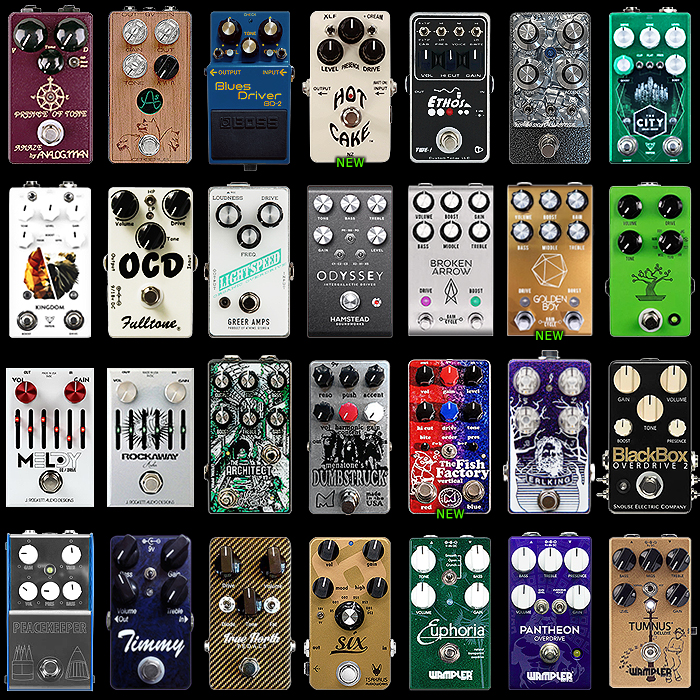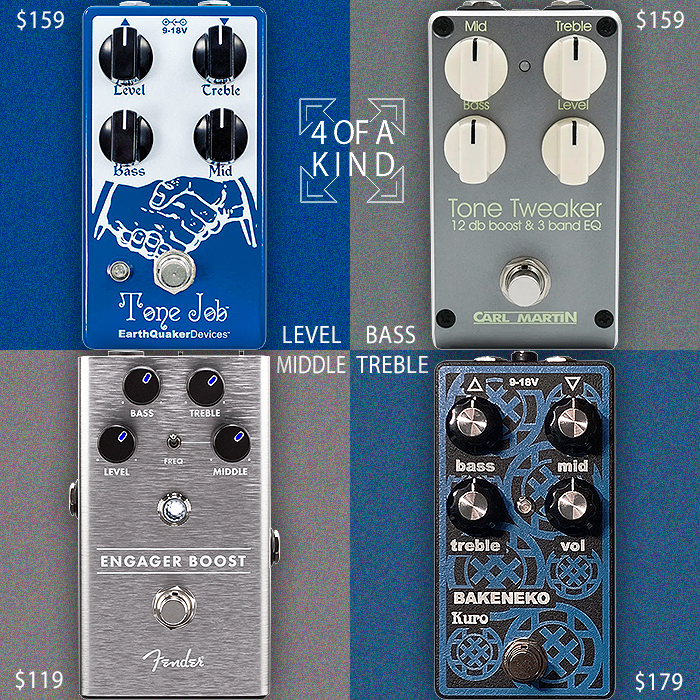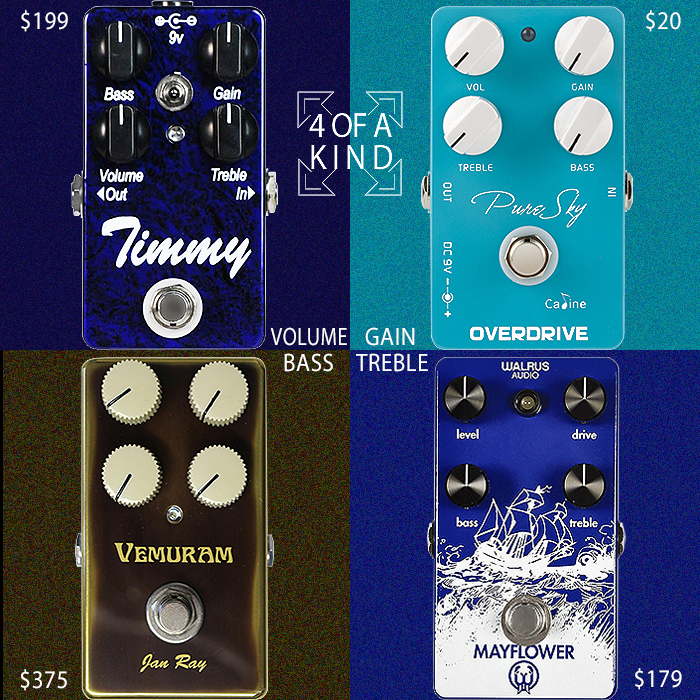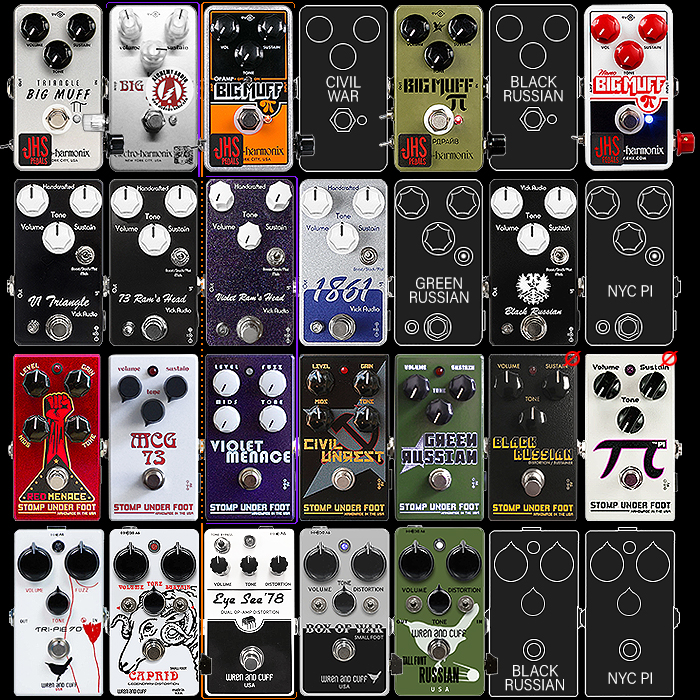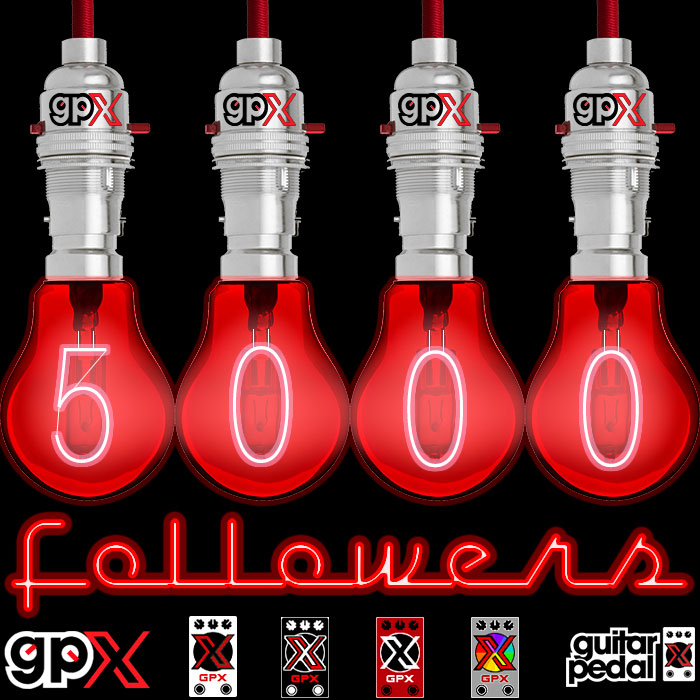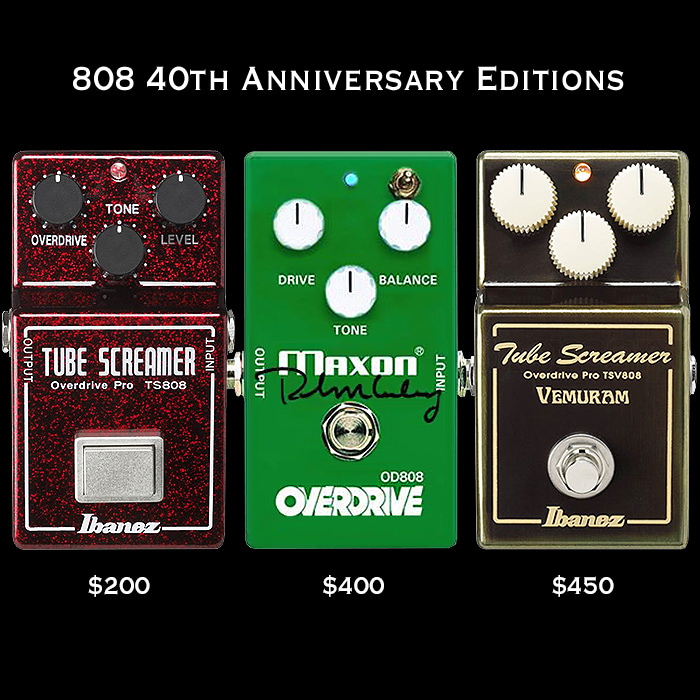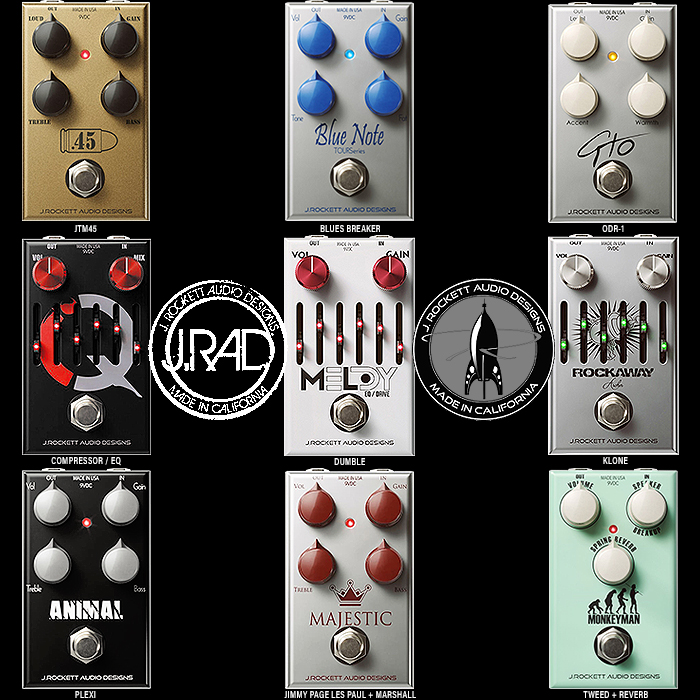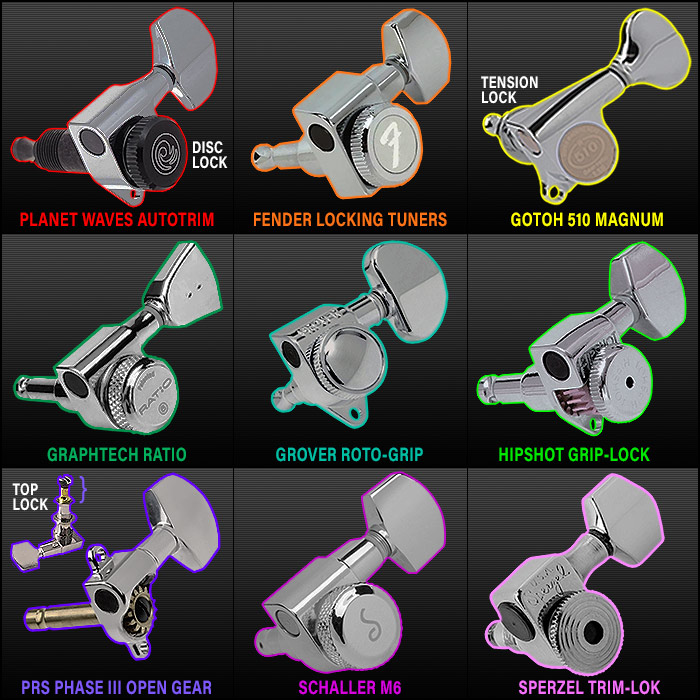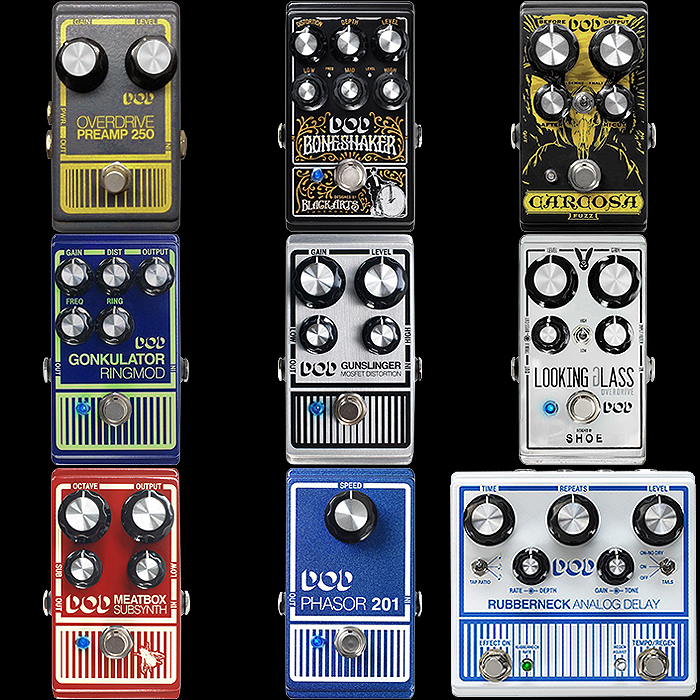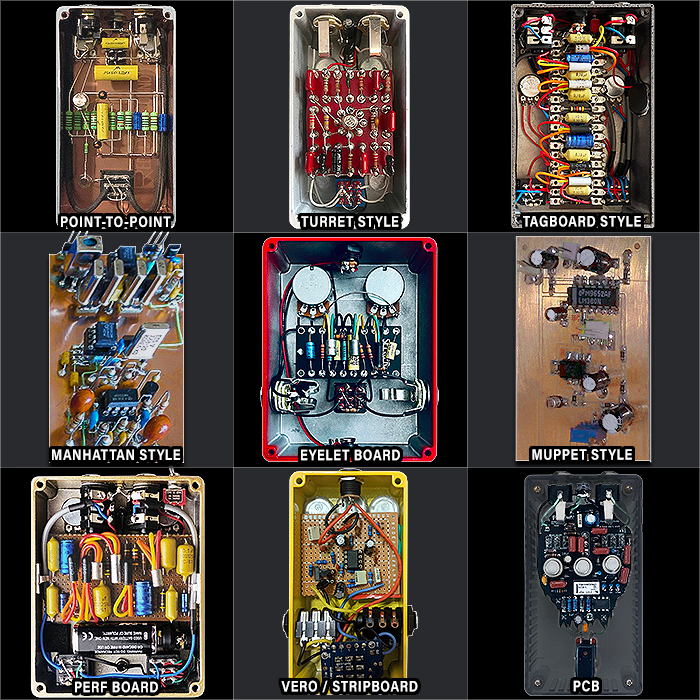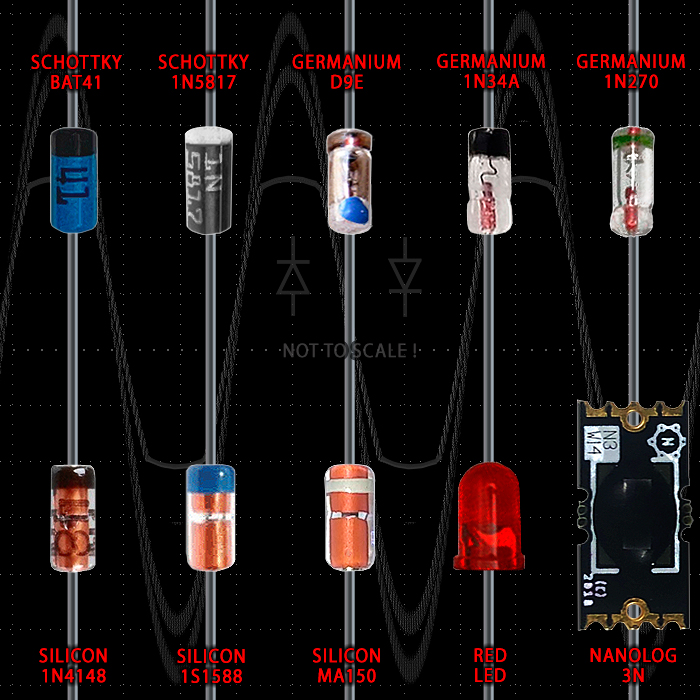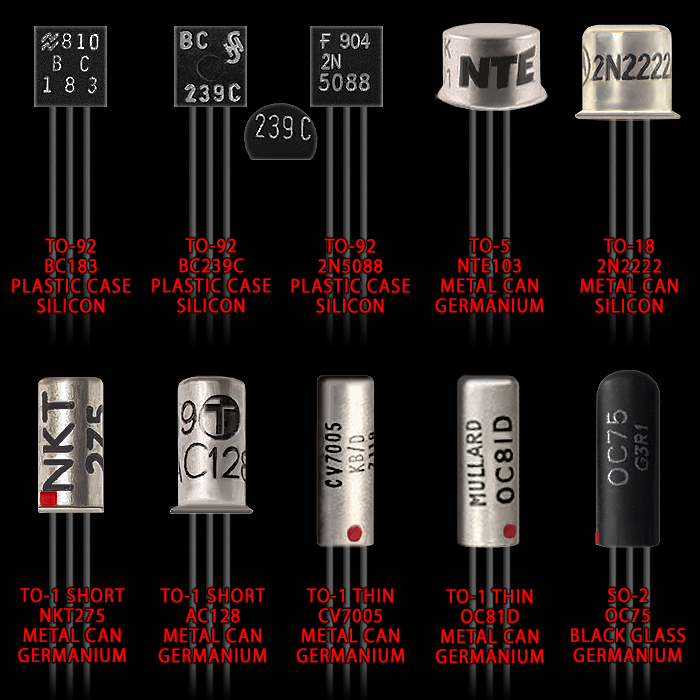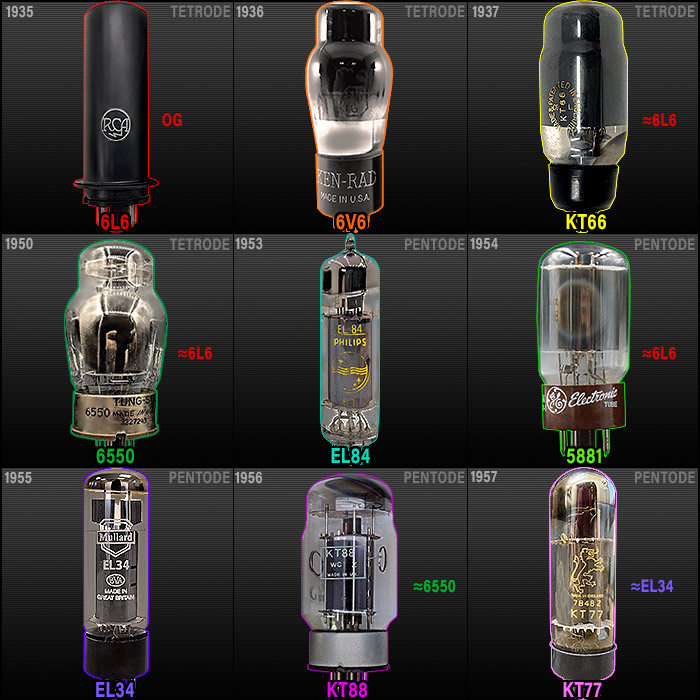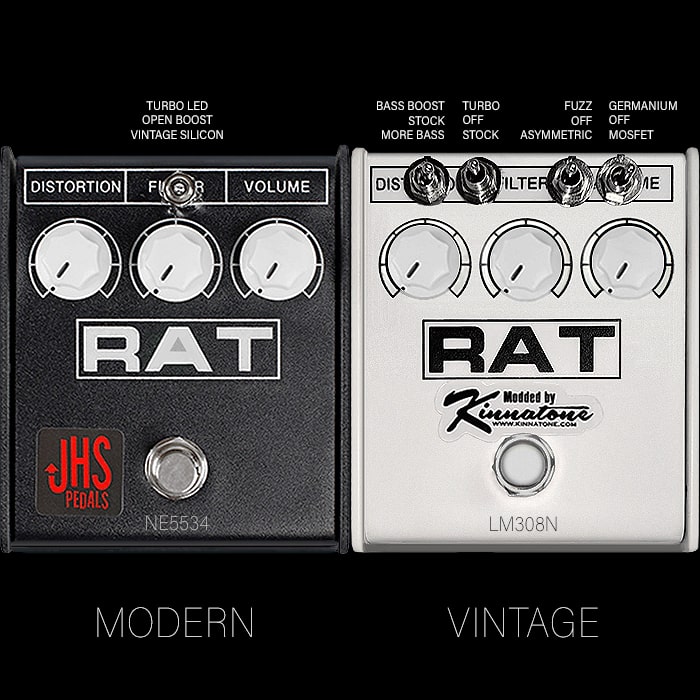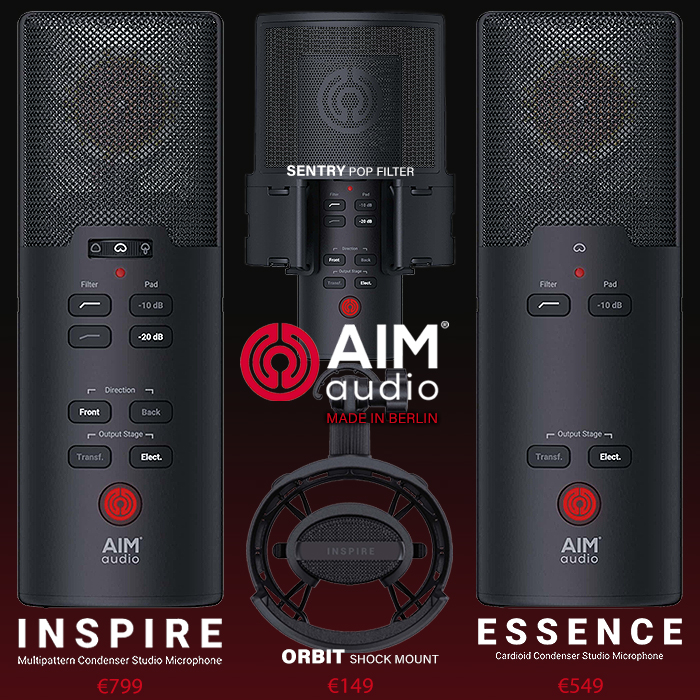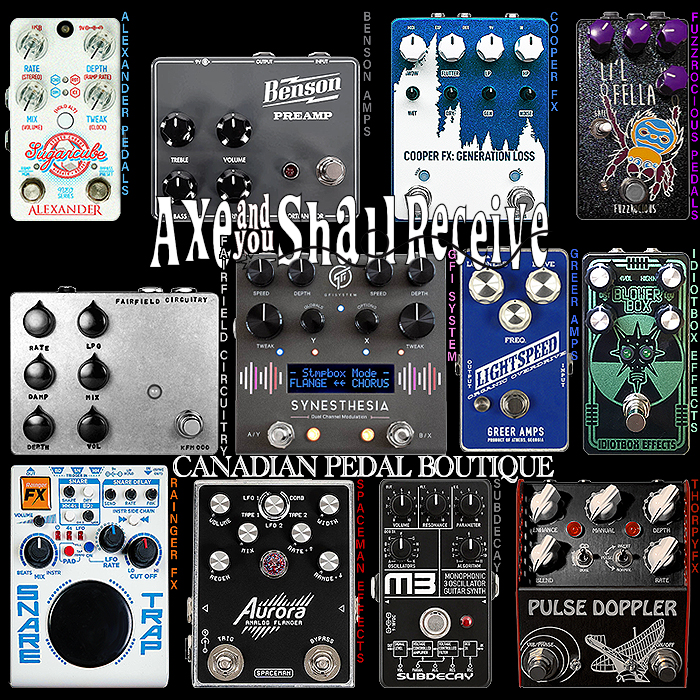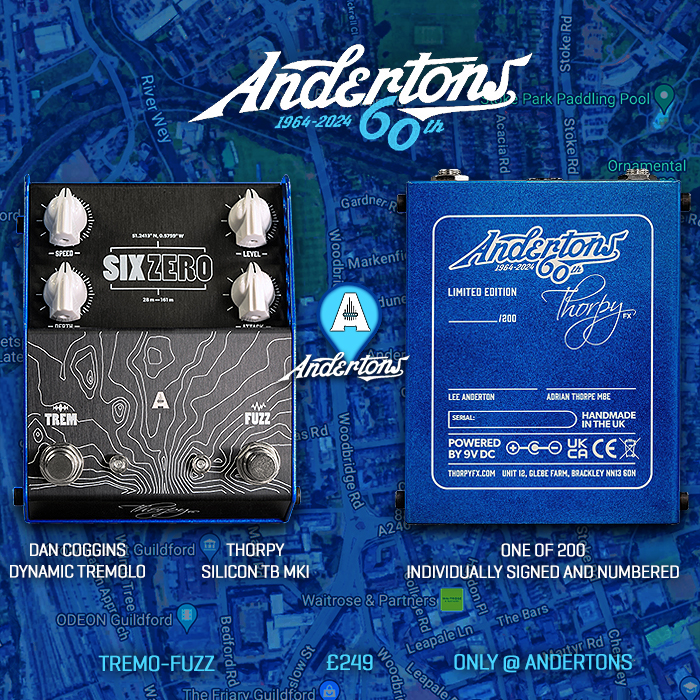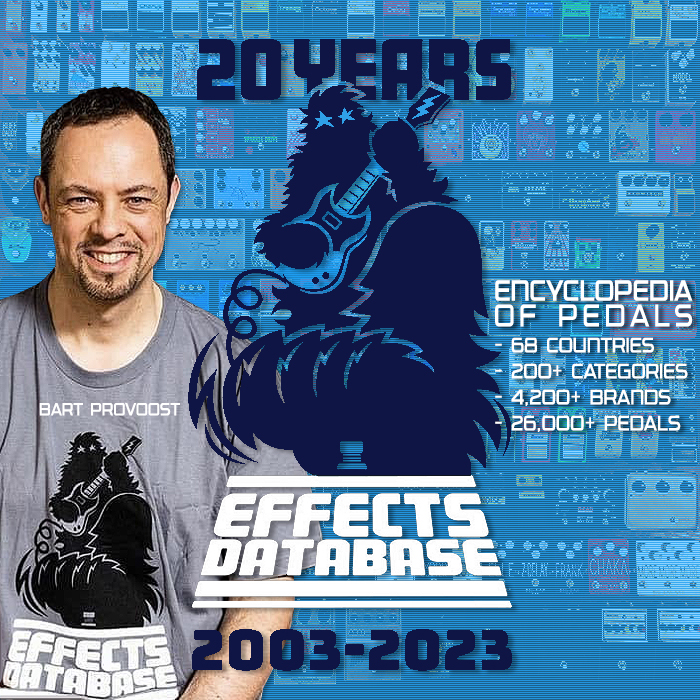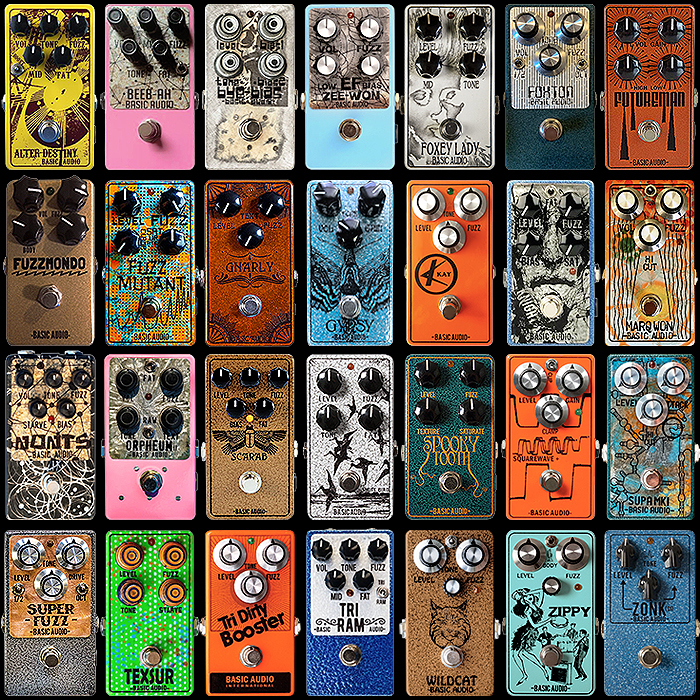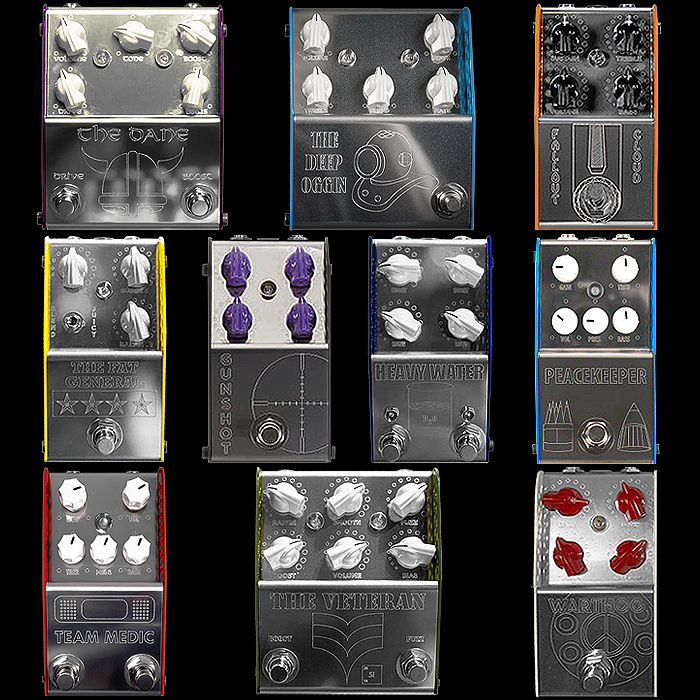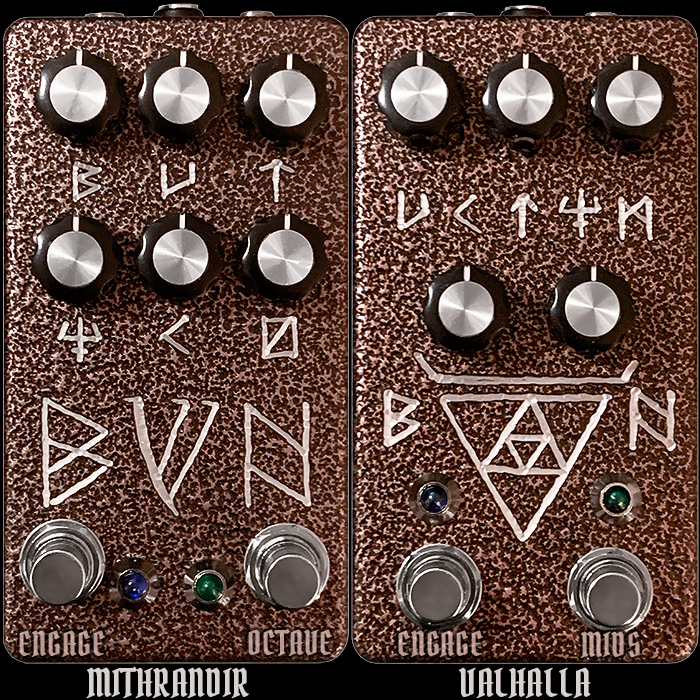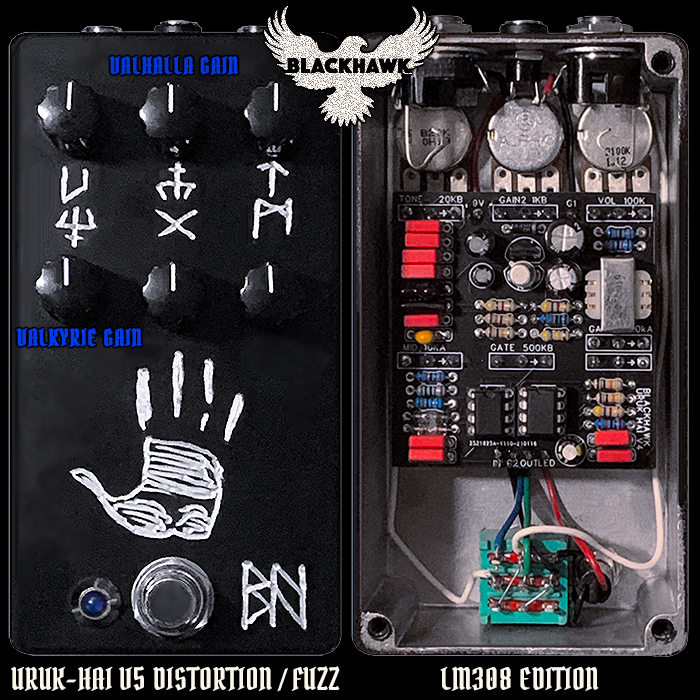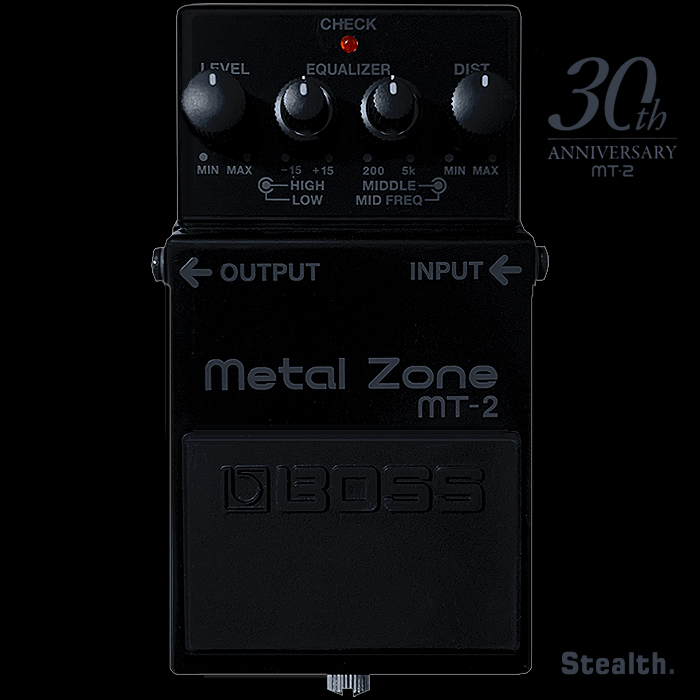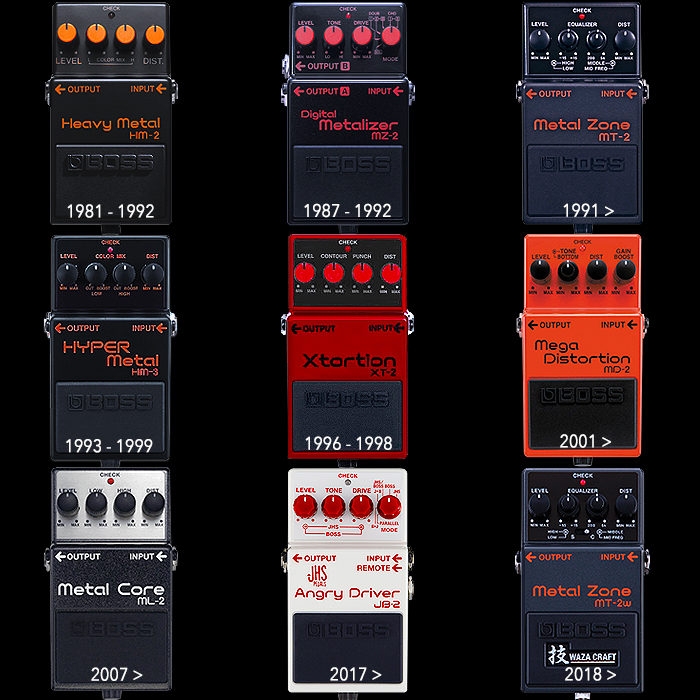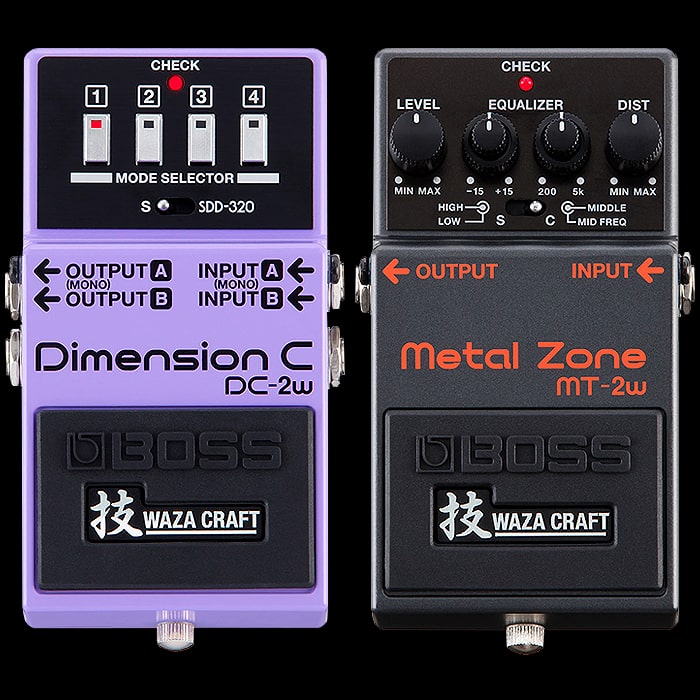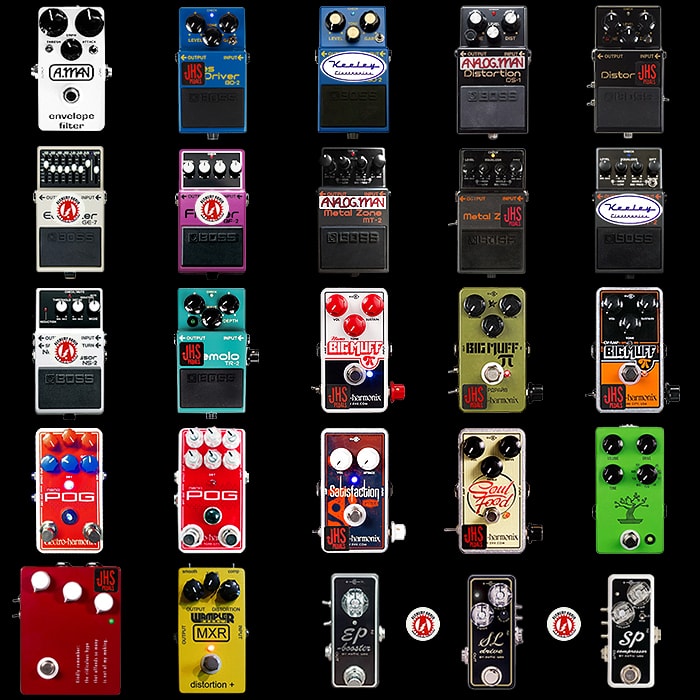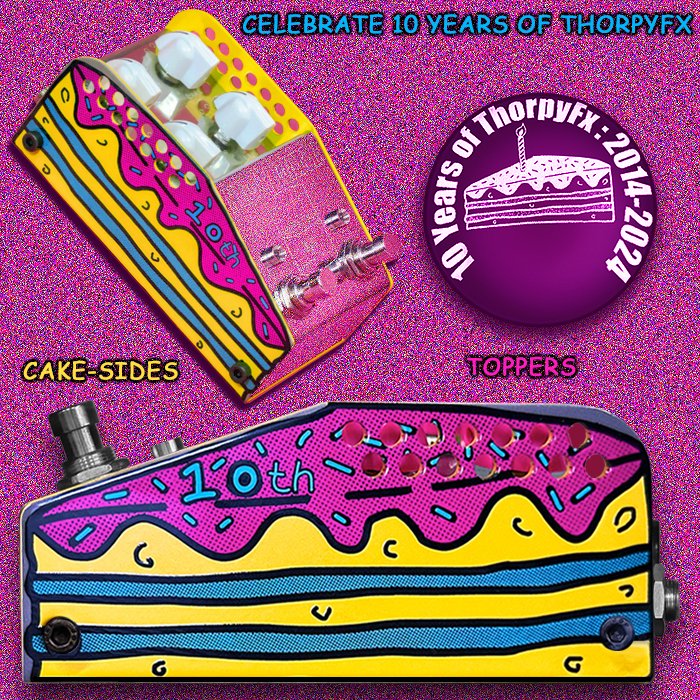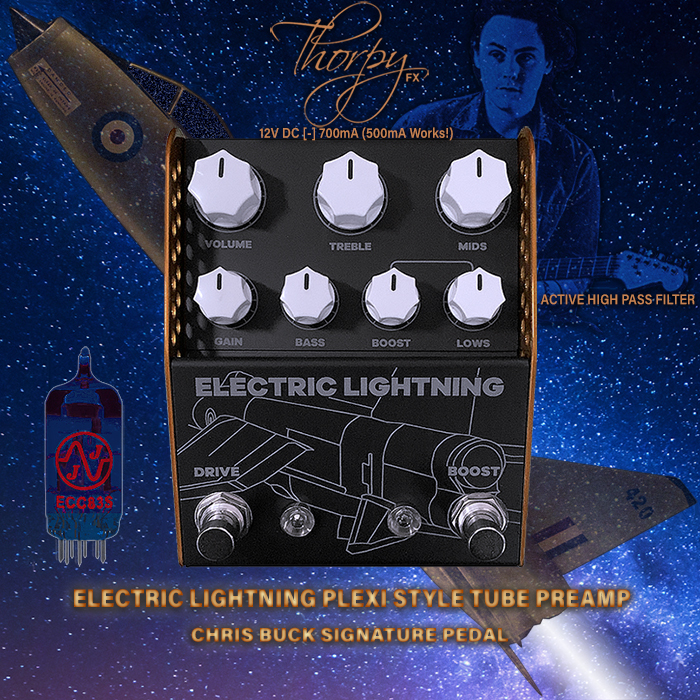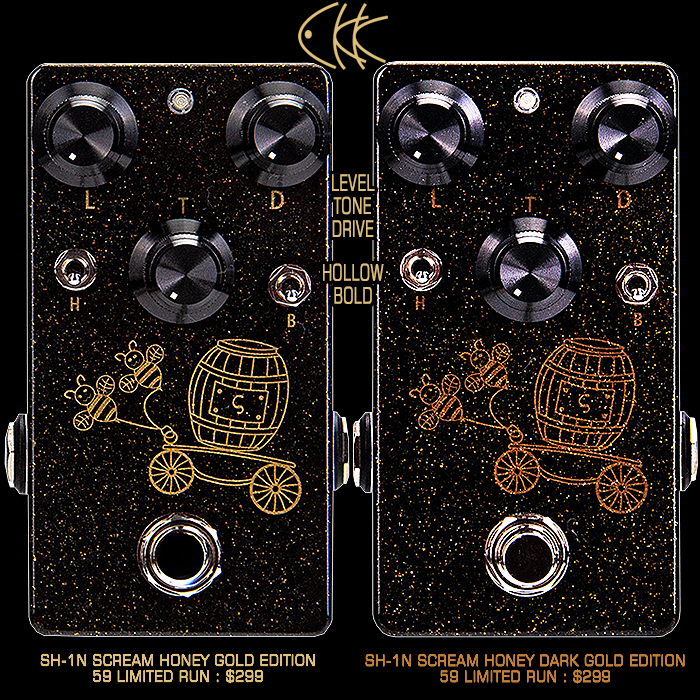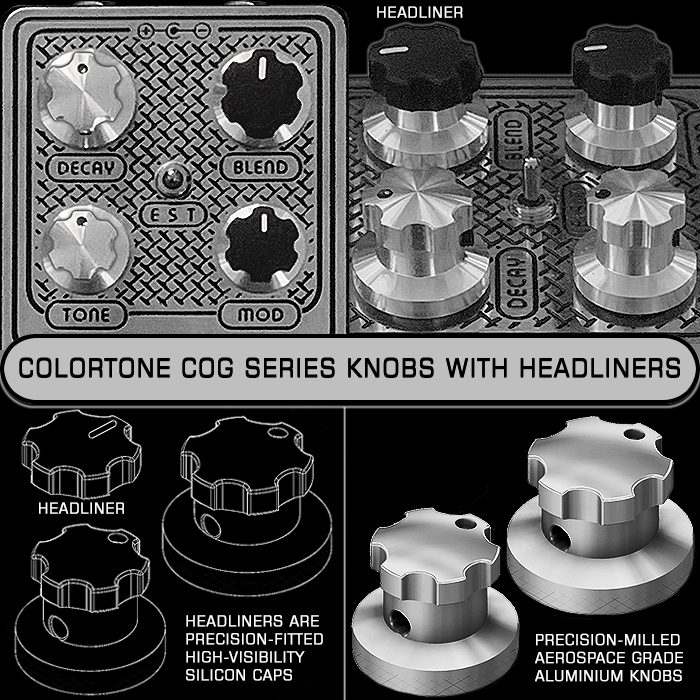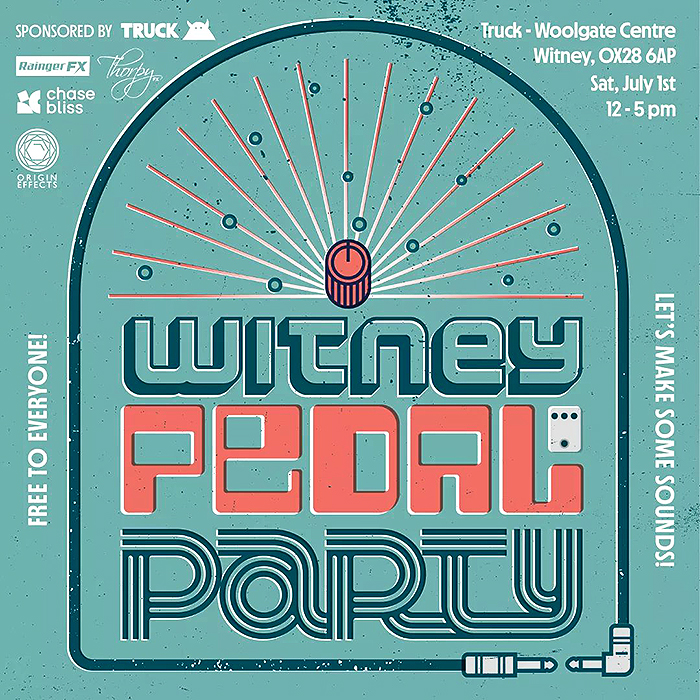A Brief Hobbyist Primer on Key Tone Stack Types and Circuit EQ Configurations - in collaboration with Master-Builder Adrian 'Thorpy' Thorpe
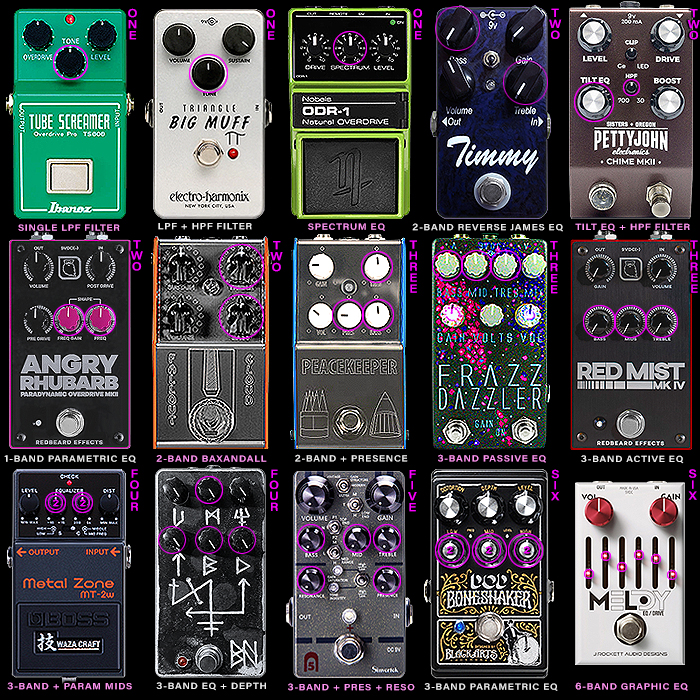
Different Tone Stacks have endlessly fascinated me over the years. Exactly which Tone Stack each builder chooses to deploy on each of their specific gain pedal/s - how complex and impactful (range, focus, taper etc.), as well as how the overall frequency profile is default calibrated at the mid-way / noon mark. There are dozens of different variations across all the different compact edition type pedals - which serve as my visual references here. And of course some Tone Stacks are particularly well-honed towards certain circuits - and allow you to cut and enhance exactly all the most impactful and pertinent frequency clusters.
They range from single knobs or sliders - all the way up to 6 or more expansive tone-shaping controls. Here I’ve chosen just to reflect on the variable-state controls - i.e. mostly potentiometer / knob-type variants - and I’m ignoring the more incidental additional toggle-switches like on the Sinvertek N5+ which you could say contains as many as 10 different tone controls - while only 5 of those are fully variable. There is some degree of overlap in core Tone-Stack methodologies listed here, while each of the featured configurations has slightly different component elements and combinations.
I’ve tried to pick out all the most obvious examples in compact enclosures - for easy reference and comparison - obviously with Adrian onboard to sanitise my selections and iron out any inaccuracies I might have otherwise inadvertently included. This article serves further to emphasise just how much variety there is out there! As a builder - Adrian of course has his own tone signatures and precise tone-stack calibrations - which many feel are characterised by some smartly augmented Upper Mids and sort of chimey clarity. We’ll see if we can get a couple of trade secrets out of Thorpy as to his own preferences and methodologies.
In the listing below I include a variety of enclosure sizes, while for the above visual I focus entirely on compact editions for easier reference and visual accommodation. Note also that I have ended up with a sort of full A-Z listing of Tone Stack Combinations - where I could have included even more variants, but decided that an alphabet-load was probably enough! Thorpy advises that there is some degree of duplication in the core methodologies - albeit each is a somewhat different overall configuration.
Both Thorpy and I do hope you enjoy this particular journey into sound!
Thorpy on Signature Sound Tone Stacks
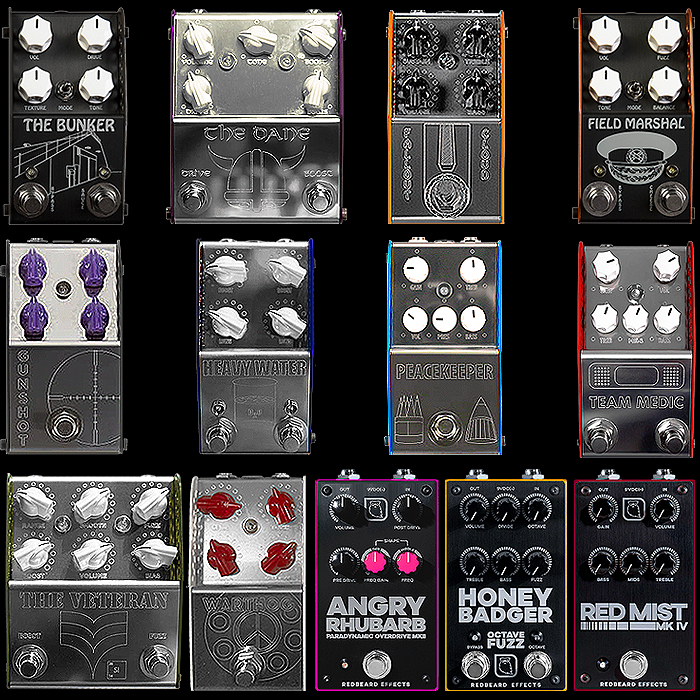
"It’s very clear to me that certain builders (including myself) have a 'Signature Sound' - I can identify a Wampler, Keeley or JHS pedal from the overall tonality it seems to engender. A lot of this is due to how the builder perceives how a guitar pedal's EQ should be. I’m not just talking about the tonestack though, it's how the EQ is set up at the front-end of the pedal, through the drive section, the impedances throughout, and finally what happens to the signal as it exits the pedal.
In line with the above, I’d suggest that I like to offer a very 'clear' sounding pedal experience. I’ve always stated that with the ThorpyFx pedals - that I want the guitar you are using to sound like the guitar you are using. String definition should be crisp and playing dynamics should be heavily present. And all this is baked in before you touch the EQ controls.
"As for the EQ controls we place in our pedals, they are designed to offer flexibility above all else - so typically the useable range is spread right around the full sweep of the knob. I like a little sparkle and chime to our pedals and so we have a nice full midrange present where possible."
The Redbeard range is tuned in a similar fashion, however Mikey has input to the final sign-off to this range of pedals and so they are tuned towards his tastes too."
SINGLE KNOB EQ TYPES - Low Pass Filter, Big Muff Style Dual RC-Filters, and Spectrum EQ.
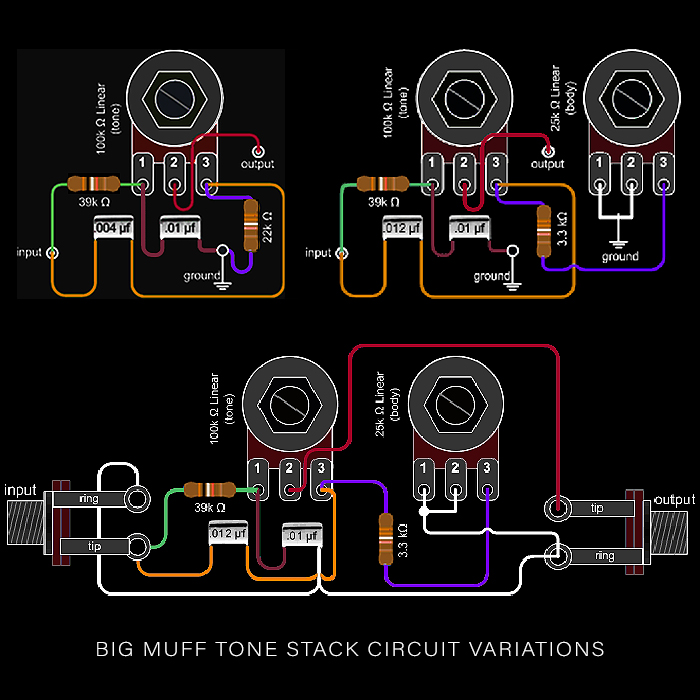
Single-knob Tone Stacks are by far the most common variant - utilising typically either one or two different RC Filters in combination. Each of these gives you distinct tone-shaping abilities, and has very specific side-effects too! :
A : Low Pass Filter
The earliest and simplest tone stack is the Low Pass Filter type which simply allows you to temper the higher frequencies or Treble element of the circuit's output. This is a ONE-knob sweepable frequency control which is also often known as a High-Cut or simply just 'Filter' control - where it allows frequencies below a certain threshold to pass-through unimpeded, while those above that threshold get chopped off! Note that for certain circuits - like the Rat Distortion - the Filter knob action is typically reversed - so it starts off with all the High Frequency Content CCW and rolls it off CW - while more typically it's the other way around and effectively works incrementally in impact.
Example : Ibanez TS808 [pictured], ProCo Rat
A+ : Thorpy's Take on the LPF EQ
"The very simplest tone circuit is when a capacitor (or inductor, but usually a capacitor in guitars and amps) is used to provide frequency dependent resistance (reactance) and passes more signal at higher frequencies and less to none at lower frequencies. By considering a simple resistive potential divider (e.g. a passive volume pot), when connecting a capacitor across the upper series resistor in the signal path a treble boost (high pass filter) function is obtained, whereas if the capacitor is connected across the lower portion of resistance instead, then a treble cut is obtained (low pass filter)"
B : The Big Muff style Tone Stack
This also has just ONE knob, but consists of two different RC Filters - a High-Pass as well as a Low-Pass Filter which generates more Treble CW, and more Bass CCW. The side-effect of such a circuit configuration is scooped mids - where some pedal builders (like Zander Circuitry) look to restore some of those cut Mids either with further independent control of the two filters, or a separate Mids control. Generally though the Muff-Style Tone Stack is highly ubiquitous now and to be found on a tonne of different pedals nowadays - Big Muff and otherwise.
Example : EHX Big Muff Pi's [pictured] (all varieties) and most every other typical variant of Muff - but also in a variety of other overdrive, distortion, and fuzz circuits
C : Spectrum EQ
This was originated by Kai Tachibana - the engineer behind the Nobels ODR pedals, and more recently the Nordland ODR-C. Here the Tone Stack elevates both High and Low-Mid frequencies simultaneously - retaining a lot more low-end in the frequency profile and producing a slightly flatter profile by default - but then in effect progressively more scooped mids as you turn the knob clockwise - in comparison to the augmented frequencies on either end. In the latest incarnation of ODR - the Nordland ODR-C - the Spectrum control is accompanied by further Mid and Lo-Cut controls.
Example : Nobels ODR-1 [pictured]
DUAL-BAND and DUAL EQ CONTOLS - Passive James, Timmy configuration, Tilt-EQ+, Single-Band Parametric and Active Baxandall style Tone Controls
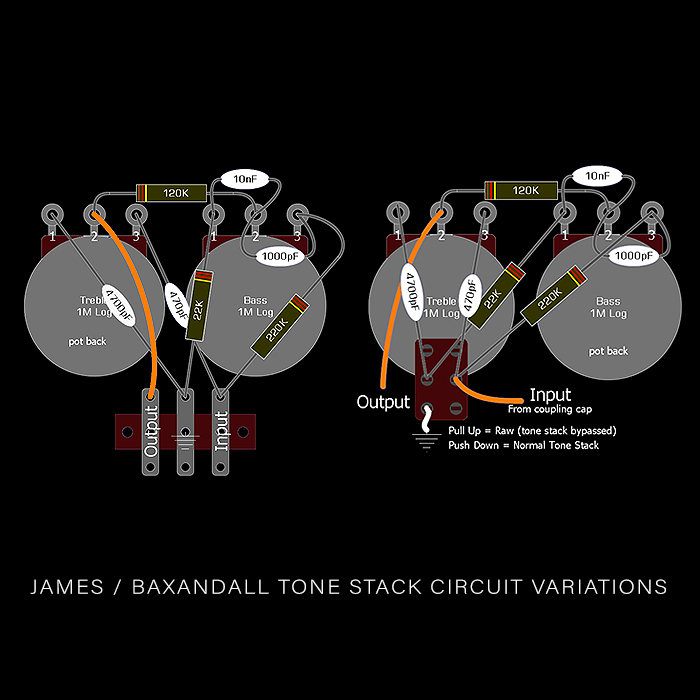
These cover a quite significant variety of dual tone control types - ranging from the more typical Passive James, and Active Baxandall controls - to Tilt-EQ variants and basic Parametric Frequency controls.
D : Passive James 2-Band EQ
After the Single Filter and Big Muff Tone Stack - the Passive Dual-Band circuit is the one most typically used - and is carried over from classic amp topologies. In essence just separate control over 2 RC-Filters - usually LPF and HPF types - which essentially roll-off both high and low end frequencies in different directions - and are typically configured additively, while in reverse - more as Bass and Treble cuts - say for the Paul Cochrane Timmy.
Example : Hamstead Soundworks Odyssey Intergalactic Driver, Pettyjohn Core Pedals
E : Timmy Tone Stack - Reverse James EQ
The Timmy pedal essentially features the same sort of Passive James dual-band control, but configured in reverse - so that turning the knobs CW cuts Bass and Treble rather than incrementing them which is far more common.
Example : Paul Cochrane Timmy [pictured]
F : Tilt EQ+
A Tilt EQ I believe is those same 2 RC Filters, but wired slightly differently - such that you get a sort of See-Saw effect - so a little like attaching a figure of 8 band around two control knobs - where if you raise one it lowers the other by the same amount - so increasing Highs and reducing Lows CW and increasing Lows and reducing Highs CCW simultaneously too. And while that actual Tilt EQ is usually just a single knob, it is often accompanied by a further control - either HPF as on the Pettyjohn Chime, or Mids as on the Catalinbread Giygas Fuzz.
Example : Pettyjohn Chime [pictured], Catalinbread Giygas
G : 1-Band Parametric EQ
Parametric tone controls consist of Pairs of knobs - where one sets the Frequency - most Typically Mids, and the other selects the amount you cut or boost that frequency by dB level. In our example - the Redbeard Angry Rhubarb - this is more of a Band-Pass type parametric control - where the frequency sweep covers circa 80Hz to just under 4kHz. And you can cut and boost up to 6dB in value.
Example : Redbeard Angry Rhubarb [pictured], BYOC Parametric Overdrive
H : Active Baxandall 2-Band EQ
Here the dual controls are active - meaning they can both boost and cut selected frequencies - while with the Passive variety you can only cut. Active Baxandall gives you rather more significant impact - which can also affect gain levels of the pedal.
Example : ThorpyFX Fallout Cloud Fuzz [pictured], Kuro Custom Audio Akuma Fuzz, Kuro Custom Audio P.h.A Boost/Overdrive
H+ : Thorpy's Take on the James / Baxandall Combination High-Pass / Low-Pass Filter EQ
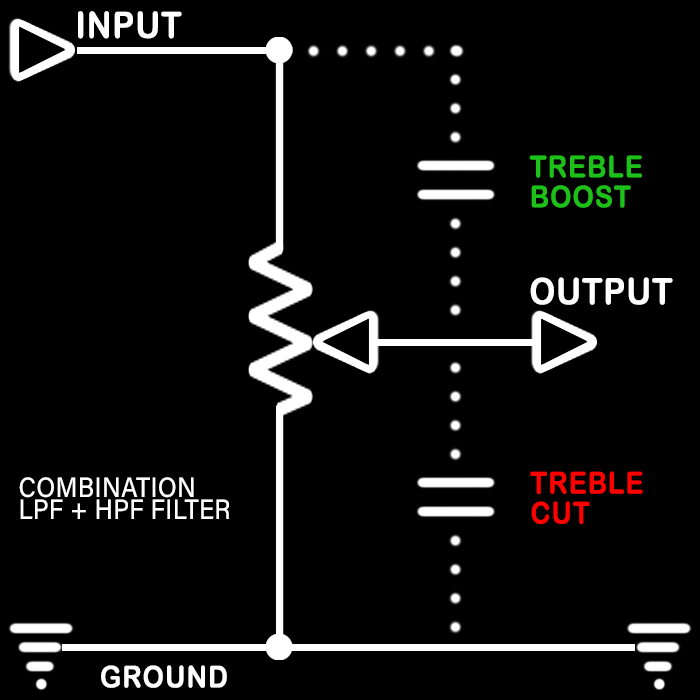
"The above schematic represents the basis for part of the classic Baxandall EQ (or rather, the passive version as the ‘James’ tone control - where the Baxandall began as an active circuit, i.e. it was built as a negative feedback network around a gain stage. Both of these circuits date all the way back to the 1940’s and have been used ever since. They are similar in that a flat response is obtained when the controls are centred, with a cut or boost when then the treble and bass controls are moved clockwise or anti-clockwise, respectively. We like to use active Baxandall tone stacks on certain circuits as the cut and boost option on certain frequencies can really make the pedal more versatile and useful with a wider range of amps and guitars.
Most classic guitar amps used passive Baxandall type eqs with the very innovative and much copied Fender tone stack being a simplified version of it. They did this to save on components and therefore cost. By the time of the tweed Bassman (earlier tweeds had interim developments towards this) Leo Fender had added a middle control and also a presence control (adjustable feedback around the power amp stage to reduce feedback at high frequencies and add high frequency harmonics, whilst also minimising hum at all settings).
In a 'shock' move Gibson implemented a similar tone stack to the Bassman. It utilised a passive treble and bass tone stack driven by a low impedance output cathode follower stage. This had the pleasant side effect of also sucking out midrange at full bass settings, something which was later used by Vox in their Vox AC30 Top Boost models.
High pass and low pass filters can be very simple, and using just one capacitor (single pole with a 6dB per octave response) or doubled up for 12dB per octave etc. Adding active buffers turns them into active filters, which can then be tuned for a much tighter response.
Notch filters can be made by using mathematically derived 'bridges' of components that selectively attenuate a chosen frequency. When placed within the feedback loop of an active gain stage these can also provide a boost at such a frequency. When the resistive components in the circuit are made adjustable and the gain of the active stage is also made adjustable, we then have the basis for a full parametric equaliser.
A graphic equaliser (so called, because of its visual representation of both the gain and frequency axes) has a cut/boost active gain stage with a number of almost identical rival circuits attached - which each deal with a specific frequency band - 3,5, and 10 are typical in the guitar world with many multiples of this available for studio use. When zeroed/centred they are effectively ‘out of circuit’ and when cutting or boosting, each frequency dependent slider has either a passive (inductor and capacitor) tuned circuit resonating at the chosen frequency, or an active Gyrator (synthesised inductor) circuit to achieve the same end, albeit with differing costs and tonalities. The passive circuit tends to be less noisy though the inductors become large and may pick up hum from external RF sources."
"Bridged T and Wien Bridge are just two different ways of doing the same thing (notch filter). We use a Bridged T filter in the Angry Rhubarb to great effect."
TRIPLE CONTROLS TONE STACKS - 2+1 Combinations, 3-Band Passive Controls, and 3-Band Active ControlsS

This covers any combination of 3-knob Tone controls - which aren't always Bass, Mids and Treble - but often two of those with a different 3rd control - like Presence or Depth.
I : Big Muff EQ + Dual Filters
As per the Zander Circuitry Big Muff variants - where the single Muff style control is accompanied by individual controls for each of the constituent LPF and HPF RC Filters - meaning you can restore some of the Mid frequencies which are otherwise rather scooped on that particularly Muff Tone Stack circuit.
Example : Zander American Geek, Zander Siva
J : Tone + Parametric Mids
Single filter style Tone control accompanied by wide-ranging Parametric Mids - to deliver particular granularity in the mid frequencies.
Example : JHS PG14 Distortion
K : Dual-Band EQ + Presence
Another fairly common variant is pairing up a Dual-Band EQ with additional Presence control. As seen on both the ThorpyFX Peacekeeper, and the Origin Effects Revival Drive editions.
Example : ThorpyFX Peacekeeper [pictured], Ananashead GT73, Origin Effect RevivalDrive
L : Dual-Band EQ + Active Bass
Occasionally found on high gain distortion pedals like the Custom Audio Art UltraSonic distortion. This is really handy for extreme gain pedals - as often the Bass can get Boomy and Flubby - so it's a big help to be able to Cut and Boost those frequencies.
Example : Custom Audio Art UltraSonic
M : Three Band Passive EQ
Very common on numerous distortion and Marshall style overdrive pedals. Can be seen on a variety of pedals - including the Dr Scientist Elements, Dr Scientist Frazz Dazzler, Bogner Ecstasy Blue Mini, EHX Metal Muff, Klirrton Oh My Goat and the 3 REVV pedal varieties.
Example : Dr Scientist Frazz Dazzler [pictured], Dr Scientist the Elements, AMT Legend Amp Preamps, Catalinbread RAH, EHX Metal Muff, JHS Angry Charlie, Klirrton Oh My Goat, REVV G2/G3/G4, Wampler Dracarys, Wampler Plextortion etc.
N : Three Band Active EQ
Not quite as common as the passive variety, but still common enough, seen to great effect on the Redbeard Red Mist MKIV. Here you can Boost frequency bands, as well as cut them.
Example : Redbeard Effects Red Mist MKIV [pictured], Matthews Effects Architect V3, T-Rex Nitros
QADRUPLE EQ CONTROLS
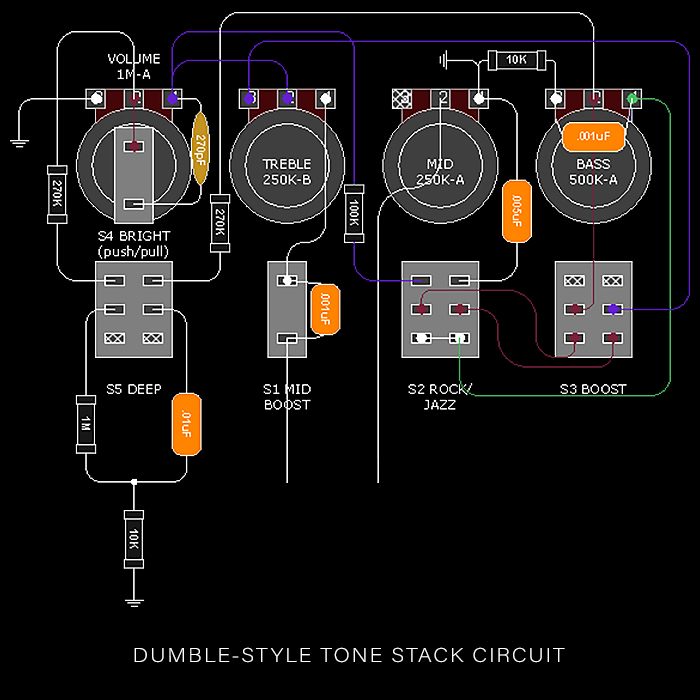
These are often 3-Band EQ's plus Parametric Mids, Presence or Depth - and occasionally some rather more unique / rare configurations of different combination tone controls.
O : 3-Band EQ with Parametric Mids
The hugely iconic Boss Metal Zone perfectly represents this Tone Stack type with its two dual-concentric knobs. I've referenced the newer Waza Craft edition - as it's very slightly less fiddly to dial in. Generally tiny amounts of tweakage have fairly major impact - so be refined!
Example : Boss MT-2W [pictured], BTMB EQ'd Vintage Series, Pettyjohn Gold
P : 3-Band Active EQ with Parametric Mids
This type seems to be a lot rarer than I imagined - as the vast majority of 3-Band EQs seem to be Passive on the Treble and Bass Bands - while the KMA Audio Dead Stag has all controls as active - for boost as well as cut of those key frequencies.
Example : KMA Audio Dead Stag
Q : 3-Band Passive EQ + Presence
A very common combination on distortion pedals - the Presence acts as a fourth tone control - adding High Frequency content and further gain.
Example : Friedman Smallbox, Keeley Filaments, KMA Audio Logan, LPD Eighty 7, LPD Seventy 4
R : 3-Band Active EQ + Presence
Another seemingly rather rare type - as most of those tend to be Passive EQ + Presence - rather than providing full boost as well as cut on all 3 frequency bands.
Example : MI Effects Super Crunch Box
S : 3-Band Passive EQ + Sizzle
I often equate Sizzle with a sort of Presence control - while Ed Rembold of Toneczar is very strong on his Sizzle not being a Presence control - but rather a further higher frequency band control.
Example : Toneczar OTP Fuzz
T : 3-Band Passive EQ + Depth
Another fairly common variant sees the 3-Band EQ accompanied by a Depth control - which regulates how much low frequency gets into the circuit.
Example : Blackhawk Balrog [pictured]
U : 3-Band Passive EQ + Contour
Contour here meaning Mid-Sweep or Mid-Scoop really is common on quite a few pedals - often more typically as part of dual-tone-control circuit alongside 'Tone'. You don't see it very often accompanying 3 Band EQ as it does on the MI Effects Megalith Delta.
Example : MI Effects Megalith Delta
V : 4 Band EQ - Low, Low-Mids, High-Mids, Highs
Classic 4-Band EQ with Mids split into Higher and Lower Frequency bands for further granularity of control over those Mids.
Example : KMA Audio Wurm / WurHM
QUINTUPLE EQ CONTROLS
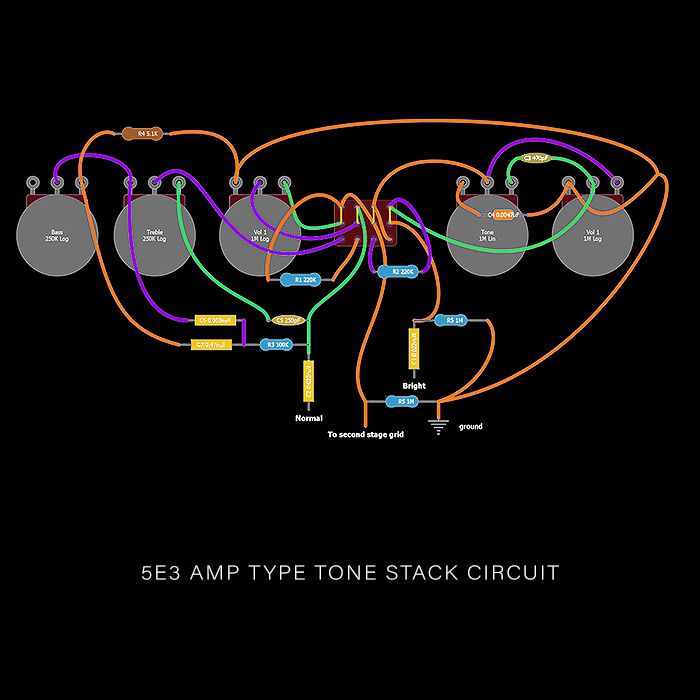
There aren't many variants deploying 5 tone controls - but you often get combinations of 3-Band EQ with further accentuation for more refined tone-control - including Parametric Elements, Q Control, Presence and Resonance.
W : 3-Band EQ + Parametric Mids + Q
I really love the Pushking Ironfinger Distortion - which has this exact configuration for incredible granularity of tone-shaping. Very few gain pedals have a variable Q control - which really sets the Ironfinger apart.
Example : Pushking Ironfinger
X : 3-Band EQ + Presence + Resonance
As noted in the introduction you have as many as 10 Tone Controls on the Sinvertek N5+ - while only 5 of those are fully variable - as referenced here! And adding Presence and Resonance controls to 3-Band EQ - like a proper Amp / Preamp!
Example : Sinvertek N5+ [pictured]
SEXTUPLE EQ CONTROLS
As far as we go on this occasion - while I've seen as many as 8 to 10 frequency band controls on some very expansive distortion pedals. For the purposes of this article it's tricky to fit much more than 6 tone controls onto a compact pedal surface!
Y : 3-Band Full Parametric Controls
No selection could be complete without DOD Boneshaker's 3 Pairs of Parametric Controls - in smart dual-concentric style arrangement - one for each of the key Low, Mid and High frequency bands. This is even more trickier to dial in than the Metal Zone - which is why it has quite that many haters! Patience and diligence rewards effort of course!
Example : DOD Boneshaker [pictured]
Z : 6-Band Graphic EQ
J Rockett do the fantastic 6-Band Graphic-EQ Q Series trifecta - which consists of a Dumble-style Drive (Melody), a Klone (Rockaway Archer), and a Compressor (I.Q.). These are all really good - and the Melody and Rockaway are simply enhanced versions of the already celebrated The Dude and Archer pedals.
Example : J Rockett Melody OD [pictured], J Rockett Rockaway Archer
ZZ! : 6-Band EQ
And last but certainly not least - is the incredible 6-Band EQ on the Toneczar Openhaus - whose specifics are closely guarded by Ed Rembold - all we are allowed to know is that those frequency bands target - Bass, Lo-Mid, Middle, Hi-Mid, Treble, and Sizzle frequency clusters!
Example : Toneczar Openhaus EQ Distortion
Final Thoughts

There are numerous clever eq solutions that builders can apply - and they have almost infinite choices as to what sort of combination Tone Stack they deploy - and exactly how they calibrate those frequency ranges and intended starting positions. The right Tone Stack can totally make or break a pedal - and the skill is knowing which Tone Stack is best suited on each occasion - and how it should best be calibrated to handle the most impactful frequency clusters for that particular circuit.
All the best builders definitely tend to have a particular tone-signature or signatures even - in how those Tone Stacks are default calibrated - leaning towards flat / neutral or more typically mids-augmented in some way to deliver more chime and clarity / note definition. Strymon has a very recognisable core tonality too for instance - presumably using carefully selected filters to smooth off the Treble and Bass - for a more polished sheen of a tone profile.
You often buy several pedals from the same builder as you like that builder's core signature tonality - which is delivered by that builder's precise calibration of the Tone Stack. You will hear me sometimes talk about taper, smoothness and dial-in-ability. Where to my mind the best circuits are the ones which are largely the easiest to dial in - or deliver the most range. You can see which builders I lean into and favour - and where my favourite modder is typically Robert Keeley - while I like Josh Scott, Mike Piera and Brian Wampler too in that role in particular.
If you're delivering maximum range - then there will of course be certain odd sounds attainable too - as you're not putting 'rails' or limits in place. Some players dislike those sorts of pedal - while I usually like having that extra tone-shaping ability to explore new and further interesting areas where few dare to go to!
Some of these tone controls can be rather fiddly - and the Boss MT-2 variants and DOD Boneshaker are famous for their overly granularised controls - where the tiniest of movements can bring significant changes - and you're often trying to move just micro-millimeters to hit that precise sweet-spot.
I funnily enough vacillate between elegant and overly precise controls - and I actually really like the Boss MT-2, DOD Boneshaker and MI Effects Super Crunch Pro - although lots of other players seem to take issue with their sensitivity!
Generally I'm a big fan of Active EQs of all types, and indeed parametric variants too. While on occasion a Tilt-EQ plus a Mids control is absolutely the perfect Tone Stack for that application!
Adrian and I hope you enjoyed this article - do you readers have some favourite Tone Stack configurations of your own?








